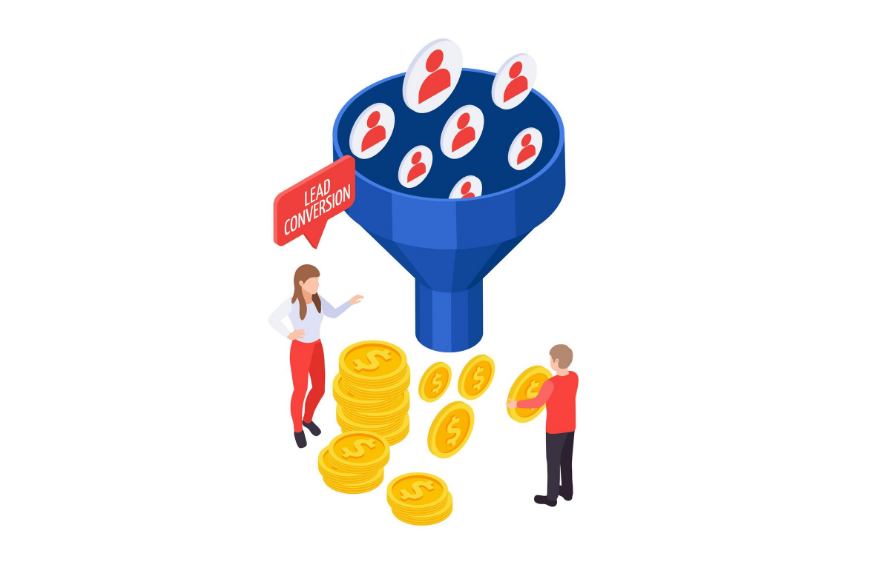Table of Contents
- The Evolution of Cold Outreach
- Current Trends in Cold Outreach
- Personalization: The Key to Success
- The Role of Technology and Automation
- Channel Preferences for Cold Outreach
- Crafting the Perfect Cold Email
- Aligning Outreach with Buyer Personas
- Measuring Outreach Success
- Future Predictions for Cold Outreach
The Evolution of Cold Outreach
Cold outreach has undergone significant transformations over the past few decades, evolving from traditional, direct methods to sophisticated, technology-driven approaches. Historically, cold outreach primarily involved face-to-face interactions or voice calls, where sales representatives would directly approach potential clients. Such methods relied heavily on personal connections and required considerable effort to establish rapport. However, as technology advanced, so did the tactics and tools available for outreach.
With the rise of the internet in the late 20th century, cold outreach entered a new phase. Email became a common medium for reaching potential customers, drastically increasing the scale at which businesses could connect with prospects. This shift not only minimized the need for personal interactions but also allowed for a more consistent and structured approach to outreach. Businesses began to rely on emailing potential leads, employing crafted messages that were cost-effective and time-efficient.
As we approached the 2020s, advancements in data analytics and customer relationship management (CRM) software allowed companies to refine their targeting and personalization strategies. Outreach became less of a numbers game and more about precise targeting. The utilization of social media platforms further revolutionized cold outreach, as sales professionals leveraged these channels to engage with potential leads in a less intrusive manner. This allowed for conversations to flow more naturally, enhancing the quality of interactions.
By 2025, cold outreach continues to adapt with ongoing shifts in consumer behavior and technological advancements. The incorporation of artificial intelligence has begun to personalize messaging even further, tailoring content based on individual preferences and behaviors. As businesses prepare for the future, understanding the historical context of cold outreach will be essential. It provides critical insights into how strategies have adapted over time, ensuring that outreach efforts are effective in an ever-evolving landscape.
Current Trends in Cold Outreach
As businesses navigate the competitive landscape of 2025, cold outreach has evolved significantly, adapting to the demands of an increasingly digital world. Personalization techniques have come to the forefront, making outreach efforts more effective. In the past, generic emails often went unnoticed, but today, tailored communications that reflect a prospect’s specific interests or challenges have proven to enhance engagement rates. By incorporating recent data, businesses are now capable of segmenting their target audience, enabling outreach that resonates on a personal level.
Another critical trend in cold outreach is the integration of artificial intelligence (AI) and automation. AI-driven tools are now utilized to gather insights about prospects, crafting more relevant messages. Automation streamlines outreach processes, allowing businesses to reach a larger audience without compromising the quality of their communications. This blend of technology ensures that messages are timely and contextually appropriate, reflecting real-time data and interactions. Additionally, AI algorithms can analyze previous outreach efforts, providing valuable feedback and improving future campaigns.
Data analytics plays a significant role in shaping effective cold outreach strategies. By leveraging data analytics, businesses can measure the success of their outreach initiatives, tracking metrics such as open rates, response rates, and conversion rates. This data not only informs strategy adjustments but also enhances targeting accuracy. With access to detailed analytics, companies can refine their approach, ensuring that resources are allocated towards the most effective practices.
Lastly, the role of social media in cold outreach cannot be overstated. In 2025, platforms like LinkedIn have become essential for connecting with prospects before formal outreach. Engaging with potential clients through social media allows businesses to establish rapport and build trust, increasing the likelihood of successful cold outreach conversions. Utilizing these channels for initial engagement aligns perfectly with contemporary outreach practices, ensuring that prospects are approached with existing familiarity.
Personalization: The Key to Success
As we progress through 2025, the landscape of cold outreach continues to evolve, with personalization emerging as a cornerstone of successful strategies. In an era where prospects are inundated with generic messages, tailored outreach has become imperative for businesses seeking meaningful engagement. Personalization in cold outreach means crafting messages that resonate on an individual level, reflecting the unique interests, needs, or pain points of potential clients. This approach significantly improves the chances of eliciting positive responses and fostering lasting relationships.
To effectively personalize outreach efforts, segmentation plays a pivotal role. By dividing the target audience into distinct groups based on criteria such as industry, company size, or past interactions, businesses can tailor their messages more effectively. This segmentation allows for the creation of customized content that speaks to the specific circumstances of each prospect. For instance, a software company might personalize their outreach by referencing challenges faced by tech startups, while a consultancy might focus on the hurdles that small businesses encounter during their growth phases. This targeted approach demonstrates an understanding of the recipient’s context, facilitating deeper connections.
Moreover, leveraging data insights is a critical component of personalization. By analyzing customer behavior, engagement metrics, and demographic information, businesses can gain valuable insights that inform their outreach strategies. Leveraging tools such as customer relationship management (CRM) systems can streamline this process, allowing marketers to monitor interactions and refine their messaging accordingly. This data-driven approach ensures that every outreach attempt is not only personalized but also relevant and timely, enhancing the overall effectiveness of cold outreach campaigns in 2025.

The Role of Technology and Automation
In 2025, technology and automation have profoundly transformed cold outreach practices, enabling businesses to reach their target audiences with enhanced efficiency and precision. Numerous tools have emerged that streamline and optimize outreach efforts, allowing companies to automate routine tasks while maintaining the essential human touch in their communications. Key players in this domain include advanced Customer Relationship Management (CRM) systems, email automation platforms, and artificial intelligence-driven analytics tools. These technologies empower businesses to manage vast databases, segment audiences effectively, and personalize outreach messages based on consumer behavior and preferences.
Email automation tools like Mailchimp and HubSpot allow marketers to craft tailored campaigns, automating follow-ups and responses in a way that feels personal. Meanwhile, AI-driven technologies analyze previous interactions, providing insights into what types of messages resonate best with specific segments. This data-driven approach not only heightens the relevance of communications but also enhances overall campaign success rates.
However, it is crucial to strike a balance between automation and genuine human interaction. Although technology can efficiently execute cold outreach, overly automated communications can lead to disengagement and a perception of insincerity. To maintain the human element, businesses should focus on crafting authentic messages and utilizing automation for administrative tasks. This hybrid approach ensures that while the initial outreach can be automated, responses and follow-ups can remain personal. In this way, technology serves as a facilitator rather than a replacement for human interaction.
In summary, as businesses in 2025 navigate the intricacies of cold outreach, leveraging technology and automation tools is key to optimizing their efforts. By finding the right balance, organizations can benefit from increased efficiency while still fostering meaningful connections with potential clients.
Channel Preferences for Cold Outreach
As businesses plan their cold outreach strategies for 2025, understanding the most effective channels is critical. Email has long been a staple in the cold outreach toolbox, and it continues to be a preferred method. With advancements in personalization and automation, emails can be tailored to meet the specific needs of prospects, making them more effective. However, it is essential for businesses to adopt concise messaging and engaging subject lines to enhance open rates and response rates. Data shows that recipients are more likely to engage with personalized content rather than generic sales pitches, emphasizing the need for targeted approaches.
Social media platforms are also gaining traction as effective channels for cold outreach. With the rise of platforms like LinkedIn, professionals are increasingly receptive to connections and messages that align with their interests and needs. The flexibility of these platforms allows for both formal outreach and casual engagement, giving businesses the opportunity to build rapport before presenting their offerings. Therefore, utilizing social media effectively requires a strategic approach, focusing on relationship-building and relevant content sharing to capture the interest of potential clients.
Messaging apps like WhatsApp and Slack have emerged as additional channels for cold outreach, particularly among younger audiences. These platforms offer a more direct approach, allowing businesses to interact with prospects in real time. With their growing popularity, messaging apps present a unique opportunity for organizations to create immediate connections and facilitate discussions in a less formal environment. To leverage these channels, businesses must ensure that their messaging is precise and respectful of the recipient’s time, promoting dialogue rather than overt sales tactics.
Ultimately, whether through email, social media, or messaging apps, businesses must consider their target audience’s preferences when choosing the most appropriate channels for cold outreach. By understanding where their prospects engage and what formats resonate, organizations can increase the likelihood of successful outreach efforts in 2025.
Crafting the Perfect Cold Email
In the rapidly evolving landscape of digital communication, crafting the perfect cold email is essential for achieving successful outreach. The objective is to capture the recipient’s attention and encourage engagement, which requires a thoughtful approach to both content and structure.
The first step in composing an effective cold email is crafting an engaging subject line. It serves as the first impression, and research shows that 33% of email recipients make the decision to open an email based solely on the subject line. Therefore, it is crucial to keep it concise while also invoking curiosity or urgency. Personalization can significantly enhance effectiveness; including the recipient’s name or company in the subject line can make it feel tailor-made and increase the likelihood of opening it.
Following the subject line, the body of the email must be both compelling and succinct. Begin with a personalized greeting that acknowledges the recipient, transitioning to a concise introduction that establishes credibility. Using the recipient’s name in the opening lines can create an immediate connection. It is also beneficial to reference a common interest or mutual connection, if applicable, to pique their interest further. When discussing your value proposition, focus on addressing the potential needs or pain points of the recipient, demonstrating a clear understanding of their industry or role.
Finally, a strong call-to-action (CTA) is key to prompting further engagement. The CTA should be clear, actionable, and easy to respond to, allowing the recipient to comprehend the next steps effortlessly. Phrasing such as “Let’s schedule a call to discuss this further” provides clarity and direction. By combining these essential elements—engaging subject lines, personalized content, and strong CTAs—you can significantly increase the effectiveness of your cold outreach while building rapport with your future prospects.

Aligning Outreach with Buyer Personas
In the realm of cold outreach, understanding buyer personas is paramount to crafting effective communication strategies. Buyer personas are semi-fictional representations of your ideal customers, grounded in data and research. To commence this process, it is essential to gather comprehensive insights about your target audience. This can encompass demographics, behavioral patterns, preferences, and challenges they face in their respective niches.
Once you have gathered the necessary data, create detailed buyer personas that reflect different segments of your target market. Each persona should include relevant details such as age, profession, interests, pain points, and buying motivations. By segmenting your audience into distinct personas, you will better understand their unique needs and how your product or service can address them. This understanding is incredibly beneficial in aligning your cold outreach strategies.
Next, it is crucial to tailor your outreach strategies to resonate with each persona. This involves customizing your messaging, tone, and channels through which you initiate contact. For instance, if one of your buyer personas prefers formal communication, ensure your outreach reflects this preference. Conversely, a persona that resonates with a more casual approach may respond better to informal language and a friendly introduction. Consistency in alignment between persona and outreach will significantly enhance engagement rates.
Moreover, leveraging persona insights allows for the optimization of message content to ensure it resonates well and addresses the readers’ pain points directly. By conveying a deep understanding of their challenges, solutions, and objectives, you establish credibility and trust from the onset of the outreach. In today’s competitive landscape, this resonance can be the difference between a successful cold outreach campaign and one that is overlooked. By approaching outreach with a strong foundation in buyer personas, organizations can foster more meaningful connections with prospective clients.
Measuring Outreach Success
In the landscape of cold outreach in 2025, evaluating the effectiveness of such efforts hinges on effectively measuring key performance indicators (KPIs) and various metrics. These parameters not only help organizations gauge the success of their outreach strategies but also enable them to refine and optimize their approaches for better results. As businesses navigate through this evolving terrain, understanding the most pertinent metrics becomes essential.
One of the primary KPIs to track is the response rate, which reflects the percentage of recipients who engage with outreach efforts. This metric is critical as it provides insight into the effectiveness of the messaging and the relevance of the cold outreach in question. A higher response rate is generally indicative of well-targeted campaigns, aligning closely with prospects’ needs or interests.
Another vital metric is the conversion rate, which measures the percentage of leads generated from outreach campaigns that ultimately convert into clients or opportunities. In 2025, organizations increasingly rely on data to pinpoint not only the quality of leads but also the channels through which they convert most effectively. Monitoring these conversion trends allows businesses to allocate resources more wisely and adjust their outreach tactics to focus on high-performing strategies.
Additively, tracking the engagement metrics, such as open rates, click-through rates (CTR), and follow-up responses, is of paramount importance. These figures expose how well recipients engage with the content of cold outreach messages. Analysis of these metrics can inform subsequent communication strategies and help optimize outreach content to ensure higher engagement.
Lastly, tracking the time taken from outreach to conversion can provide insights into the overall sales cycle, identifying bottlenecks that may exist. Monitoring and analyzing these KPIs and metrics will empower businesses to make informed decisions, enhancing their cold outreach effectiveness in 2025.
Future Predictions for Cold Outreach
As we look ahead beyond 2025, the landscape of cold outreach is poised for significant transformation influenced by advancing technology, shifting consumer expectations, and evolving best practices. One key area of development will likely be the integration of artificial intelligence (AI) and machine learning into outreach strategies. These technologies can analyze vast amounts of data to better understand potential clients’ preferences and behaviors, allowing for more personalized messaging that resonates with recipients on a deeper level. Companies that harness AI to refine their targeting will likely see enhanced engagement rates and improved lead generation.
Furthermore, the rise of advanced automation tools is expected to revolutionize how sales teams conduct cold outreach. Automated systems will not only streamline the outreach process but also help optimize the timing and sequence of messages based on real-time analytics. This could lead to outreach being executed at optimal moments when prospects are most likely to engage, ultimately increasing the efficacy of these campaigns. Sales teams will need to balance automation with the human touch, ensuring that outreach remains personal while benefiting from efficiency improvements.
Additionally, as consumers grow increasingly savvy and protective of their personal data, maintaining trust will become paramount. Strategies that emphasize transparency, consent, and value-driven messaging will likely emerge as best practices. Companies must focus on providing genuine value through their outreach efforts, whether that’s by offering insights, solutions, or educational content that addresses specific pain points. The cold outreach of the future will not only seek to initiate a conversation but will prioritize building long-term relationships based on mutual benefit.
In conclusion, as we move beyond 2025, the future of cold outreach will be shaped by technological advancements and a greater focus on customer-centric strategies. By embracing these changes, businesses can enhance their outreach effectiveness while cultivating meaningful connections with potential clients.






Leave a Reply